Otago's Trailblazer, Isabel Turnbull: The University of Otago’s first female Humanities lecturer30/12/2022 By Gwynaeth McIntyre and Tyler BroomeMary Isabel Turnbull was born on 28 February, 1895 in Greymouth to Sarah Ann Blewett (of Cornish origin; born in Australia) and William Turnbull (from Linlithgow, Scotland). Her family settled in Dunedin in 1896. She enrolled for a Bachelor of Arts at the University of Otago in 1913. Her course primarily consisted of Latin and French courses, but also included some English and Political Economics classes. In 1916, Isabel began her BA Honours studies in Latin and French. At the time, the University of New Zealand had a provision whereby a student who received First Class passes in a subject at Honours level could be awarded an MA; Isabel was awarded hers in 1917. Teaching and Career From 1915-1917, Isabel was hired as the assistant to the Lecturer in Latin, Professor Thomas Dagger Adams: a role which seems mostly to have consisted of marking with some lecturing, like a modern tutor. At the end of 1917, when Prof. Adams enlisted for military service, there was a scramble to find a suitable replacement. Newspaper reports of several Military Service Board meetings illuminate the discussions: They were looking for a man, and recognised that while Isabel had been “assisting” Mr Adams, “a girl of 20 could not be expected to take up the work if Mr Adams went”. Ultimately, on Prof. Adams’ recommendation, Isabel was asked to teach the Senior and Advanced Latin classes. This would be extended to include the Junior and Honours classes the following year, for a total of 54 students across all classes. Another significant aspect of her time as acting lecturer In Prof. Adam’s absence was her appointment to the Professorial Board in April of 1918. This Board was one of the governing bodies of the University, responsible for setting lecture and examination schedules, and consulting with the University Council on any matter of importance. Thomas Adams had been on the board for a few years prior to his actual appointment to Professor in 1917, and so Isabel was brought into these meetings to occupy the role normally filled by the head of Classics. She was one of only two women on the board at the time – the other being Professor Winifred Boys-Smith of Home Sciences – and she was the only woman from outside of Home Sciences to sit on the Professorial Board for at least a few decades. The visual of this image is very telling: a young, recently graduated woman involved in the high-level administration traditionally dominated by older men. After Professor Adams’ return to teaching in 1920, it becomes a little more difficult to identify specific details about Isabel’s teaching. Her Latin classes spanned a range of texts from authors such as Virgil, Cicero, Livy, Horace, Sallust, and Plautus. In addition to teaching the language itself, the examination topics set by the University of New Zealand would have required Isabel to provide background on the Late Republic and 1st century Imperial periods, effectively combining a modern language and history course. It is clear that at some point (perhaps quite early on) Isabel became involved with the running of the Greek History, Art and Literature (HAL) course. Introduced in 1922, this was the first Classics course in New Zealand which did not require knowledge of the ancient languages, and marked a significant step toward reducing the barriers toward Classical Studies for the typical student. In 1927-1928, Isabel registered with the British School at Athens, taking a trip to Greece and Constantinople to gather material for the teaching of the HAL course. Isabel remained a fixture of Otago’s Classics Department until her retirement in 1950, aged 55 – the compulsory age of retirement for women in teaching at the time. Her 35-year career was one of the longest for any academic in the Humanities at Otago at that time. Museum, Research, and Public Engagement During her career, Isabel had some involvement in the Otago Museum’s Greek and Roman coin collection. She appears to have been responsible for cataloguing the Troas, Aeolis, Lesbos, Central Greece, and Euboea Greek coins and she gave a paper at the Royal Numismatic Society of NZ, which was then published the year after her retirement (1951), on “Greek Coins from the Fels Collection in the Otago Museum.” Isabel gave a number of public lectures over the course of her career. Topics ranged from Homer’s Odyssey and the myths of Plato, to daily life in Greece and Rome, to Classical reception and modern comparisons (“Virgil’s influence on Tennyson”; “The Roman Empire, old and new” which compared the Roman empire with Mussolini’s developing fascist government in Italy). In later years, Isabel delivered educational lectures over Dunedin’s 4YA national radio station on a number of topics related to women in the ancient world, particular authors (such as Seneca and Pliny the Younger) as well as “myth-busting” popular fallacies (‘That the Ancient Britons Were Savages’). These lectures were nationally broadcast, and made up a core part of New Zealand’s early broadcasting history. Isabel presented a more nuanced view of women’s role in ancient society than the traditional point of view and she was at the forefront of new attitudes towards women’s roles in the ancient world and in modern academia. "The fact that people instinctively shrink from the thought of the Imperial Roman matron in her splendour and virtue was one that had to be taken into consideration by the lecturer, who explained it as being due to three main causes – the transformation of Rome from a simple agricultural State to a great empire; the influence of Greek literature which taught the Romans love of rhetoric; and the ideal of stoicism borrowed from Greek philosophy. Her descriptions of the women of literature and history, however, were so aptly chosen that the impression given to the audience was that the Roman woman was a very human creature, the women presented including characters from the comedian Plautus – both matrons and otherwise – from the letters of Cicero and Pliny, and from history, especially the noble Livia and her ignoble stepdaughter Julia." (Otago Daily Times, 27 July 1934, page 16) Member and Leader of Academic and Women’s Societies Isabel was closely involved in several academic societies during her career. She was the Honorary Secretary of the Archaeological Section of the Otago Institute (now part of the Royal Society of New Zealand) at its first general meeting in 1921, and held this role until at least 1923. She was also involved in the founding of the Otago Classical Association, and served on its committee throughout her career. Isabel was also on the Council of the Association of Friends of the Otago Museum, from its inception in 1926. As the first female academic in the Humanities at the University of Otago, Isabel was involved at an early stage in some of Otago and New Zealand’s women’s societies. She was active in the Otago University Women’s Association (OUWA, est. 1914) as early as 1916, where she was appointed to assist new female students in the Arts Faculty in a mentoring capacity. She was later elected to the OUWA committee in 1917. She was also involved in early discussions regarding the New Zealand Federation of University Women (NZ FUW), in particular regarding its integration with the OUWA. She later held notable roles in the Otago branch of the NZ FUW, joining its committee in 1937, before becoming vice-president in 1940, then president from 1941-1942. In this capacity, she was responsible for maintaining connections with other branches of the NZ FUW and the International Federation of University Women, as well as promoting collegiality among Otago’s women graduates through regular meetings, and an afternoon tea for recent graduates. Conclusion Isabel was quite the trailblazer, working in places where no woman had worked before, and serving as a role-model for the women who came after her. She almost single-handedly managed the Classics teaching program for 3 years and, together with Prof. Adams, laid the groundwork for what Classics at Otago would become. In addition to her other contributions, she was instrumental in bringing the study of women in the ancient world to both an academic and a public audience in Dunedin, New Zealand, and far beyond. Yet her story, and her contribution to Classics, Ancient History and Archaeology, has largely remained obscured and in the shadows. We hope this short blog serves to remedy this obscurity, and to shed some light on this amazing woman, and the incredible things she was able to accomplish in our field more than a century ago. References
Clark, A. (2018) Otago. 150 Years of New Zealand’s First University. Dunedin: Otago University Press. Acknowledgments Research into Isabel Turnbull’s career was generously funded by Andrew Calvert (a member of Isabel’s family). We are grateful for his support, knowledge, and encouragement which helped us bring Isabel’s incredible career and achievements to light. Thank you to Moira White at the Otago Museum for access to the Museum’s records of the Classics Teaching Collection and for permission to publish Isabel’s handwritten notes. This project could not have been completed without the help from the librarians at the Hocken Library at the University of Otago. Their expertise and assistance in helping us locate relevant information in the archives and granting permission to publish this material has been truly invaluable.
0 Comments
Written by Candace Richards |
| “Relatively late in life in March 1935 Burnell became engaged to Marjorie Kane Smyth (1888–1974). She had worked as a nurse in Egypt and France during World War I, published a collection of her poetry, Poems, in London in 1919, and was also a painter, on one occasion exhibiting her works alongside other Australian artists in Paris at the Salon d’Automne in 1925” (Harting 2016, 85). |
Marjorie Smyth’s service during WW1 places her squarely in Egypt, and we can be certain that she was the one who purchased the Abydos calcite jar, like many other service people who bought antiquities during their wartime postings. The fact that it was donated in both her married name and her husband’s, after he had passed, is not uncommon, and was followed up by Marjorie with a donation to the University of Sydney to endow a Classical Greek essay prize in Frederick’s honour in 1962 (Calendar 1963, 452).
The pitfalls of tracking married women in scholarship are varied and require active recognition of the many ways in which women can be easily written out, or in this case, ‘assumed out’ of history. The donation credit line for the Burnell’s Abydos jar has now been updated in the Nicholson Collection's databases to reflect the full names of both individuals, including an acknowledgement of Marjorie’s maiden name, and Marjorie has now been acknowledged as the collector of the item.
References
- Harting, Andrew. 2016. ‘Frederick Spencer ‘Fritz’ Burnell (1886-1958)’ in The Lysicrates Prize 2016: The People’s Choice. Sydney. 77-89.
- Newman, Vivien. 2016. Tumult and Tears: The story of the great war through the eyes and lves of its women poets. Barnsley, South York Shire.
- Calendar of the University of Sydney for the year 1963. Sydney 1962. accessed: http://calendararchive.usyd.edu.au/Calendar/1963/1963.pdf
Written by Candace Richards
The University of Sydney

Archival research at the Nicholson has revealed that women’s contributions come in many forms including administrative and technical support often undertaken behind the scenes for the improvement of the collections; research and publication of the collections; education and public outreach; collecting activities, often as part of archaeological research on behalf of the museum or financing collecting practices; donors to the collection; and finally, as family support when women are often active in the research or collecting process and then if outliving their partner assume responsibility for the management of collections and posthumous legacies. The teasing out of the individual stories and collective roles women played is part of my long-term research project ‘The Hidden Women of the Nicholson Museum.’ It is hoped that in addition to highlighting the many accomplishments and contributions women have made throughout the history of the Nicholson, we can examine how we construct our own histories, and offer new approaches to constructing historically accurate and inclusive institutional narratives.
Written by Natalie Looyer
University of Canterbury, NZ
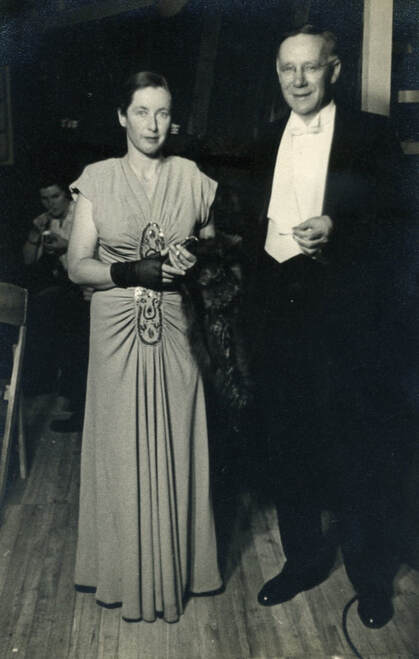 Marion Steven and James Logie attending a university ball, c.1950. Copyright Steven Family.
Marion Steven and James Logie attending a university ball, c.1950. Copyright Steven Family. Those in the Department who had known Marion spoke about her with warmth and joviality. When the opportunity for an oral history project on Marion’s life was suggested, I jumped at the chance and set about interviewing family, friends, past students and colleagues of Marion. The project took me up and down New Zealand and as far as Sydney and Adelaide where I followed the threads of Marion’s network. Throughout these interviews – twelve in total – I learned about Marion’s impressive career as a scholar, a collector and a teacher. Through the memories of those closest to her I came to understand the extraordinary legacy that she left behind, not only in her remarkable collection of antiquities, but also in the influence that she had on the lives of great Classics scholars whom she nurtured.
Marion began her academic career in Medicine, excelling at university and receiving a medical scholarship to a London Hospital. But she was rejected upon arrival, as her application had not made it clear that she was a woman. Marion then turned to Classics – perhaps what she had wished to study all along. She soon began teaching at the University, where her compassion for students earned her their respect. She valued the traditional learning of Latin and Greek, but she also valued material culture as a way of understanding life in the ancient world, which inspired her to begin collecting antiquities for her teaching.
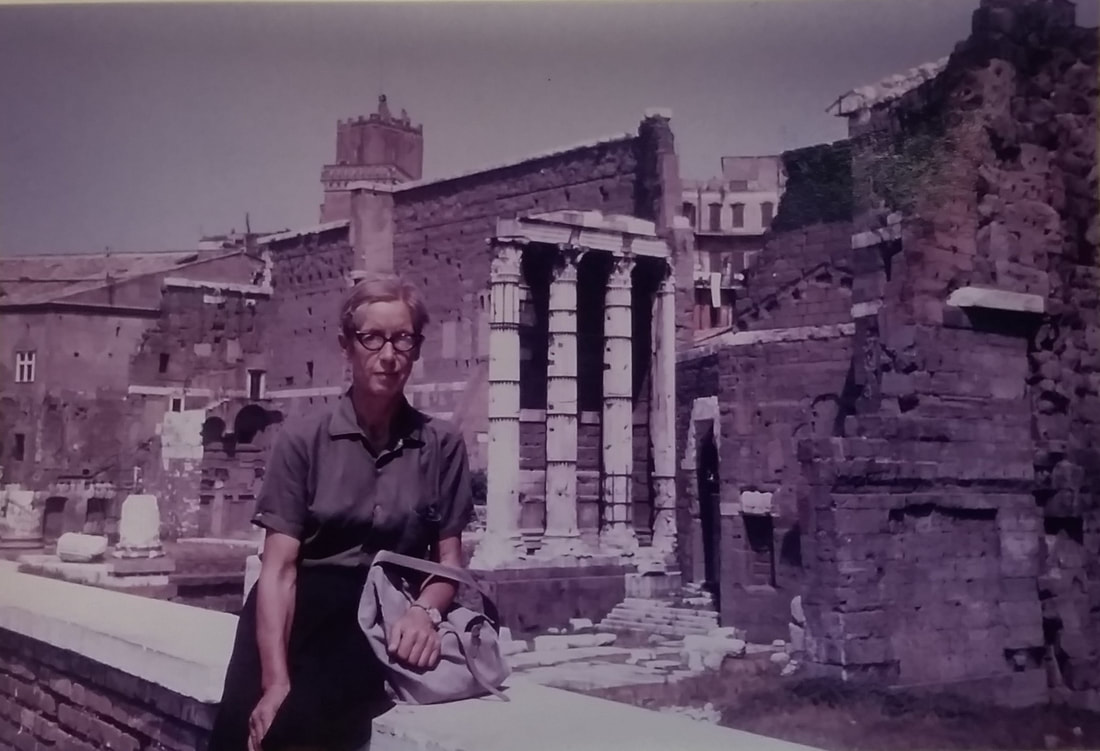 Marion Steven before the Forum of Augustus in Rome, 1970. Copyright University of Canterbury.
Marion Steven before the Forum of Augustus in Rome, 1970. Copyright University of Canterbury. Marion developed relationships with prestigious scholars such as Dale Trendall and John Beazley, which put the Logie Collection on the global map. But Marion’s most cherished relationships were to those in her close community. Her family and students remembered her as an advocate for young people, especially young women. She took her students seriously. She was generous with her time, hosting many of her students at her own house gatherings. And she was generous with her resources, gifting her collection of antiquities to the University for future generations of Classics students.
Marion continued to enjoy visits from her past students well into her retirement. One of my favourite comments in an interview comes from Professor Edwin Judge of Macquarie University, a past student of Marion. When speaking about his return visits to his hometown in Christchurch, he said, “Marion, we assumed, would always be there. And nothing could possibly be wrong in Christchurch with Marion there.”
Edwin’s comment seemed particularly pertinent in the context of the Christchurch earthquakes, which, eleven years after Marion’s passing, caused extensive damage to the Logie Collection. But Marion’s attitude – that if something fell out of her bike and broke, it could just be put back together again – stood the test of time. After an extensive rehabilitation project in 2014, the Logie Collection was fully conserved and is now on public display at the Teece Museum of Classical Antiquities in Central Christchurch. Marion’s legacy lives on in her collection, but as my interviewees pre-eminently remembered Marion’s warmth and generosity over her material contributions, I came to realise that perhaps her greatest gift was the way in which she fostered her community and those around her.
Natalie Looyer, from the University of Canterbury, was first to present her paper ‘The Academic Legacy of Miss Marion Steven.’ This was the culmination of Natalie’s wide ranging oral history project on the legacy of the woman who not only founded the Logie Collection, but whose legacy can be measured by the success of her students and who is remembered as a remarkable teacher who shaped the lives of generations of classicists.
Throughout the conference, AWAWS was proud to also support an anti-bullying workshop, drinks for members and hold a special meeting in which it launched its new mentoring program. Each of these activities was supported generously by the ASCS which co-sponsored events and facilitated our participation. A special thanks to Dr Daniel Osland, conference convenor, and AWAWS Treasurer, Gwynaeth McIntyre, for their wonderful work organising the conference and for their support for the AWAWS events.
Abstracts from each our of presenters are available in the ASCS41 conference program - https://www.otago.ac.nz/classics/ascs-2020.htm
Blog Subjects
All
About
Adele De Dombasle
AWAWS Project
Beryl Rawson
Betty Fletcher
Eleanor Stewart / Jacobs (nee Neal)
Eugenie Sellers Strong
Eve Stewart (nee Dray)
Isabel Turnbull
Jessie Webb
Judy Birmingham
Margaret Hubbard
Marguerite Johnson
Marion Steven
Marjorie Burnell (nee Smyth)
Olwen Tudor Jones
Pacific Matildas
Susanna Davies
Theme: Mrs
Theme: Museums
Theme: Research Methods
About the Blog
The contribution made by women to ancient world studies in Australia and New Zealand has often been neglected. Our blog aims to bring you new research and insights into some of these remarkable women.
Written by AWAWS members, these entries will hopefully be a starting point to discovering more about the diversity of people who have shaped our understanding of the ancient world.
Write for the Blog
We are currently seeking contributors to the blog. If you would like to write your own entry on any aspect of the history of women in ancient world studies, please get in touch with your idea and a draft outline of your entry via socawaws@gmail.com
Archives
January 2024
December 2022
August 2021
July 2021
May 2021
April 2021
February 2021
December 2020
November 2020
September 2020
August 2020
July 2020
June 2020
May 2020
April 2020
March 2020
December 2019
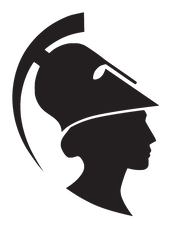
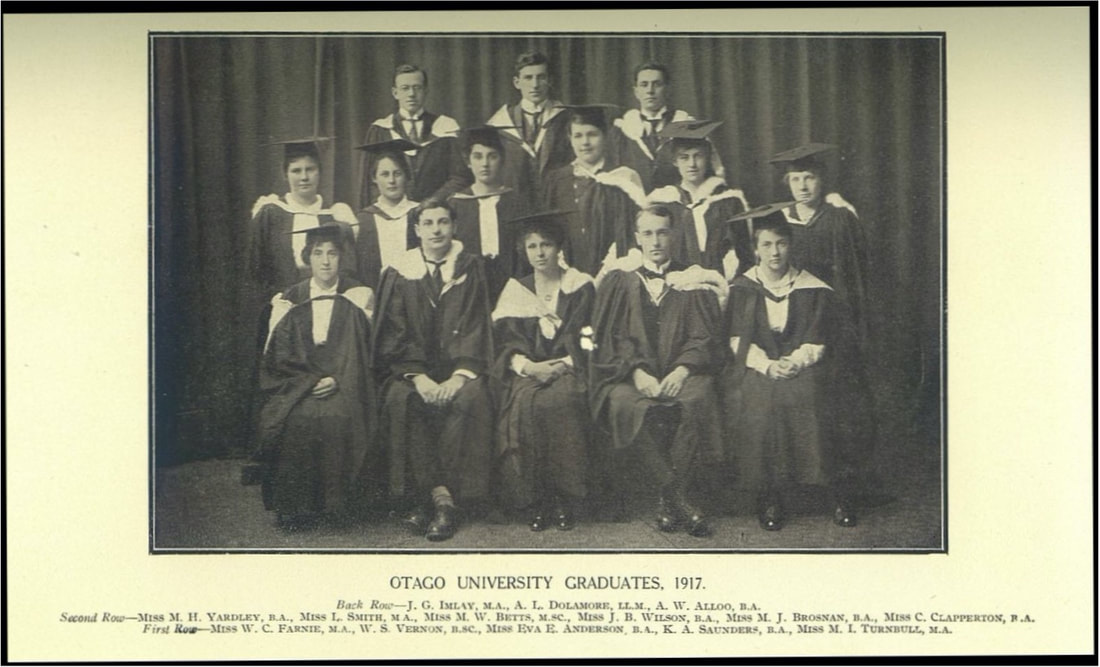
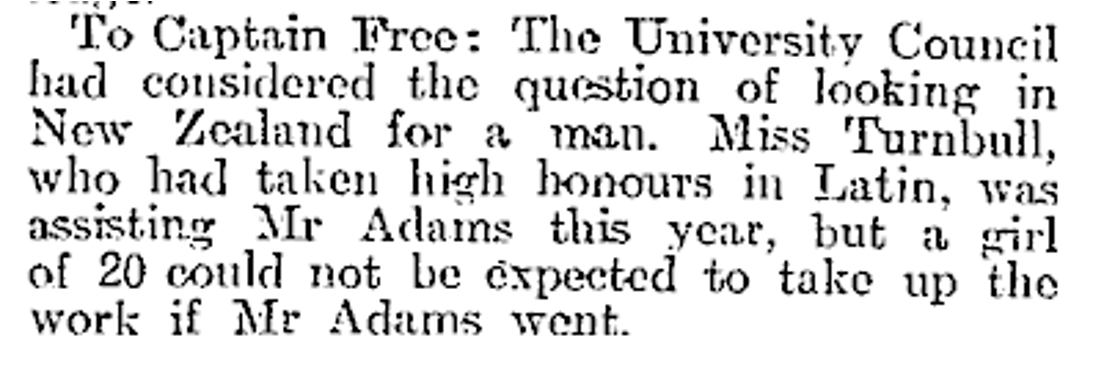
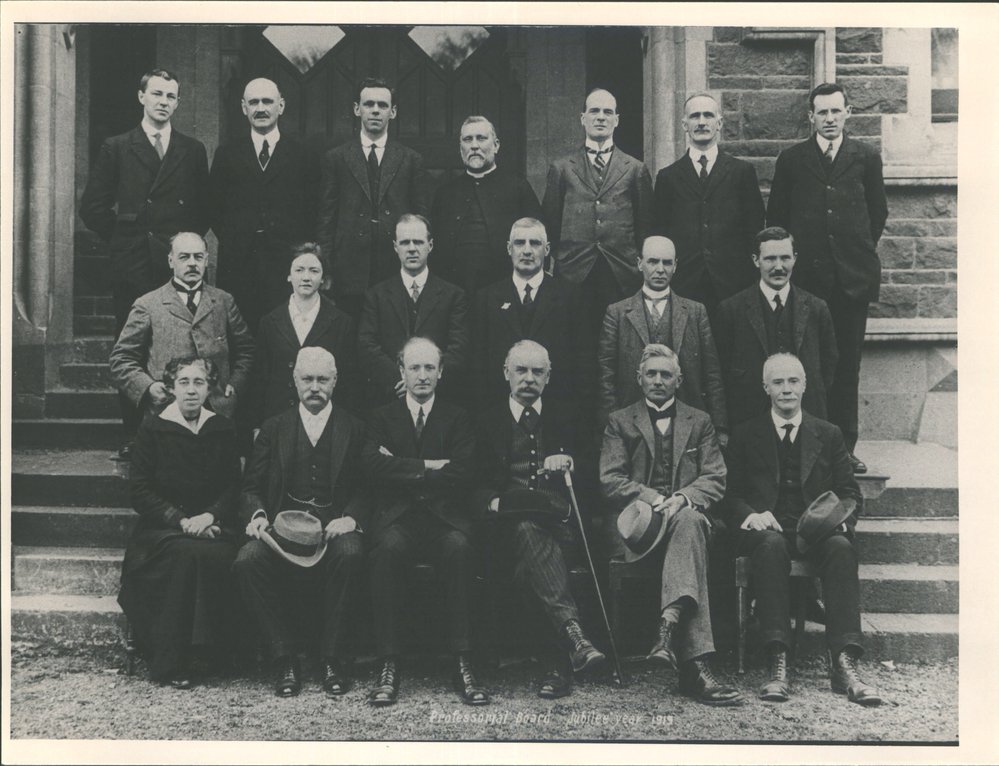
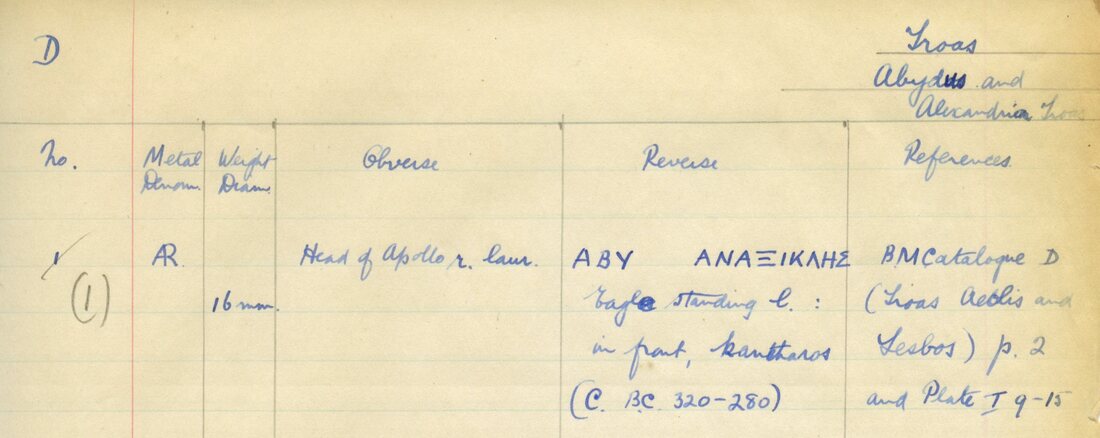
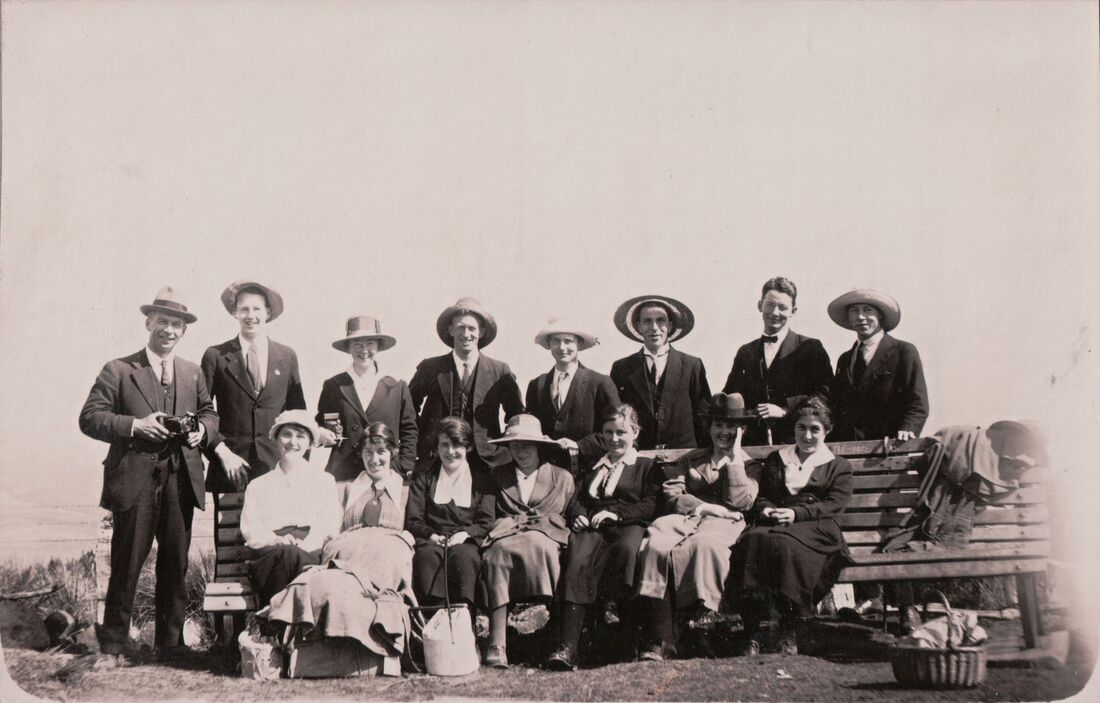
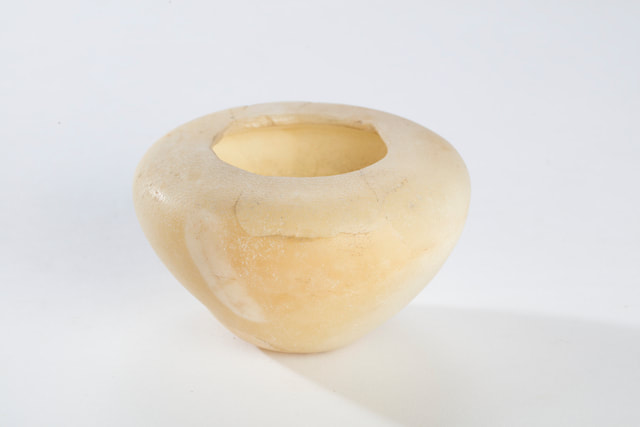
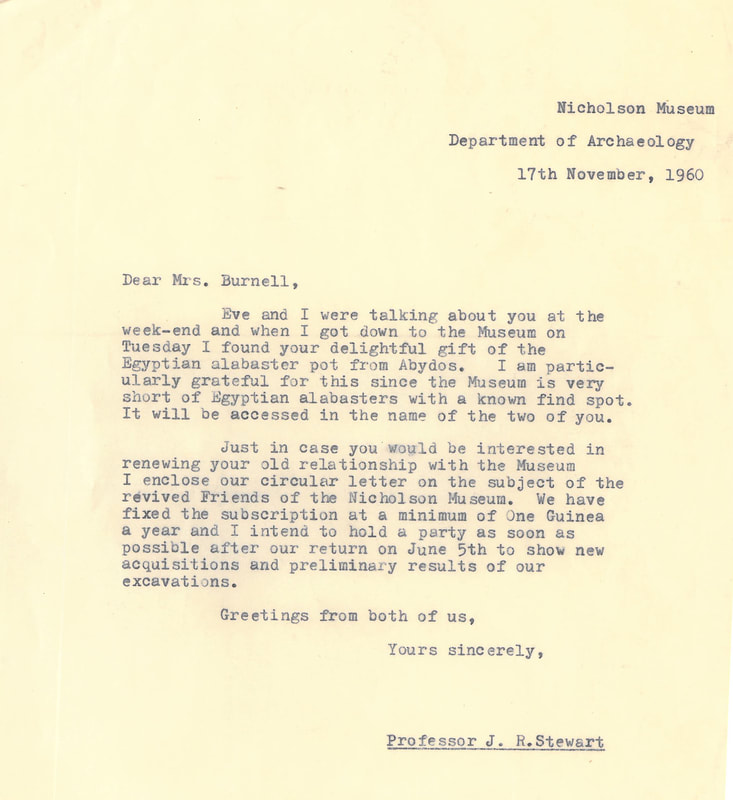
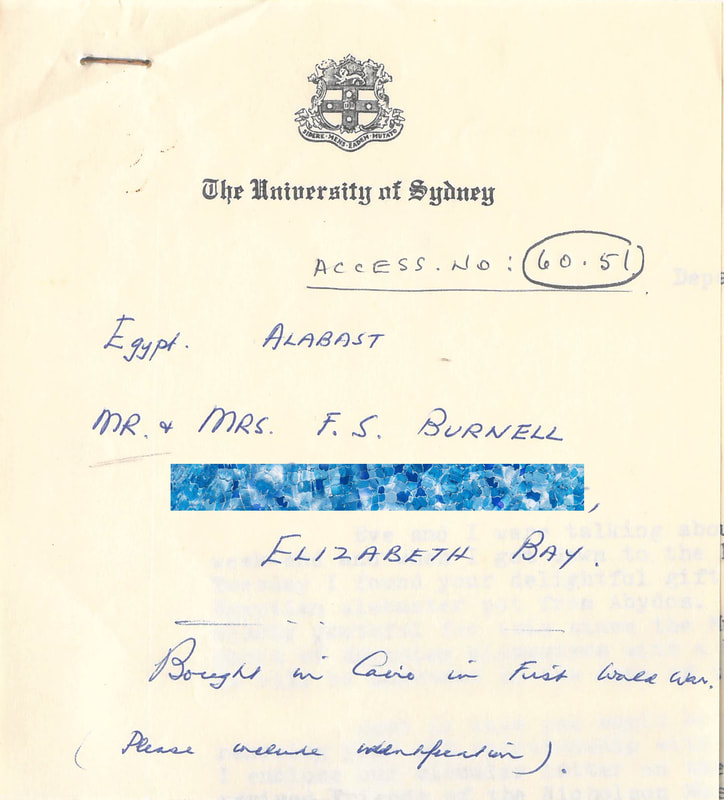
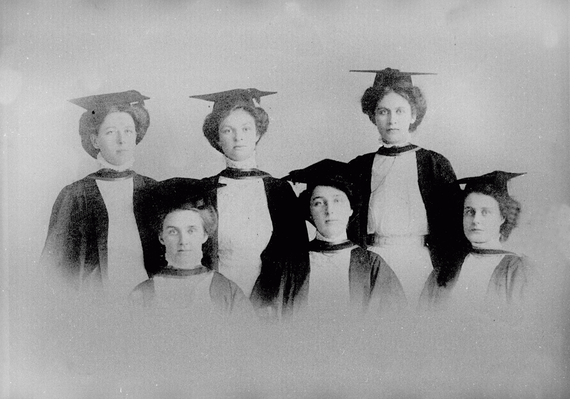
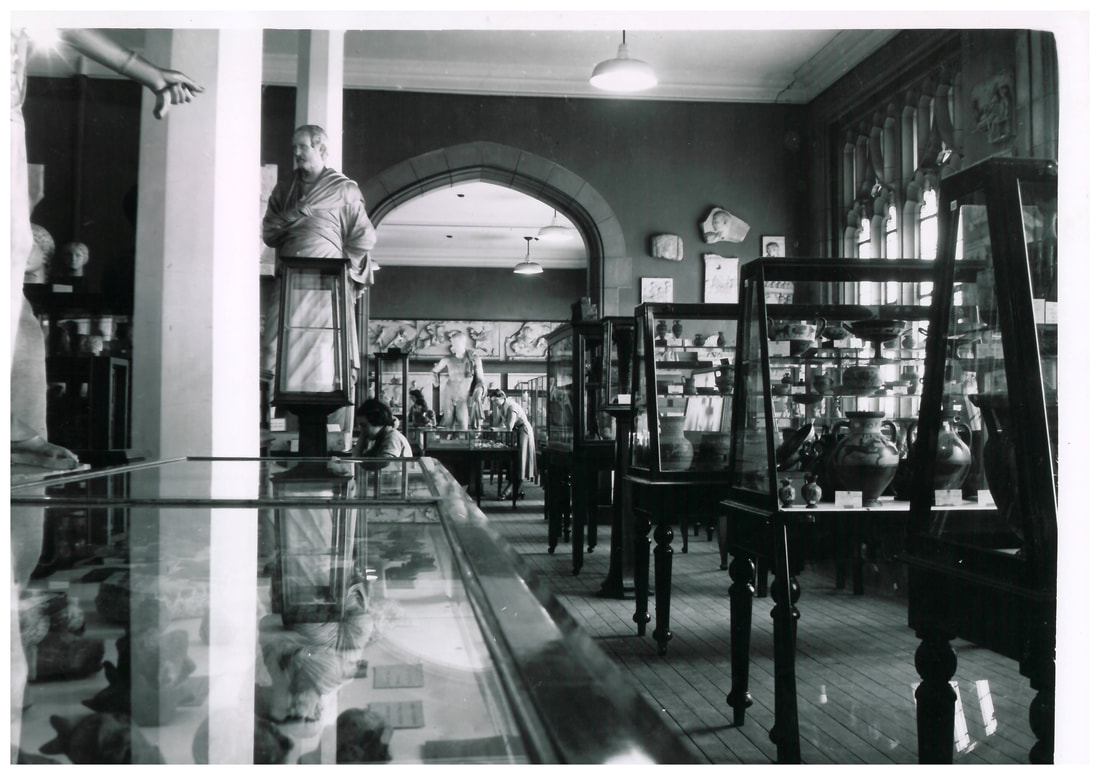
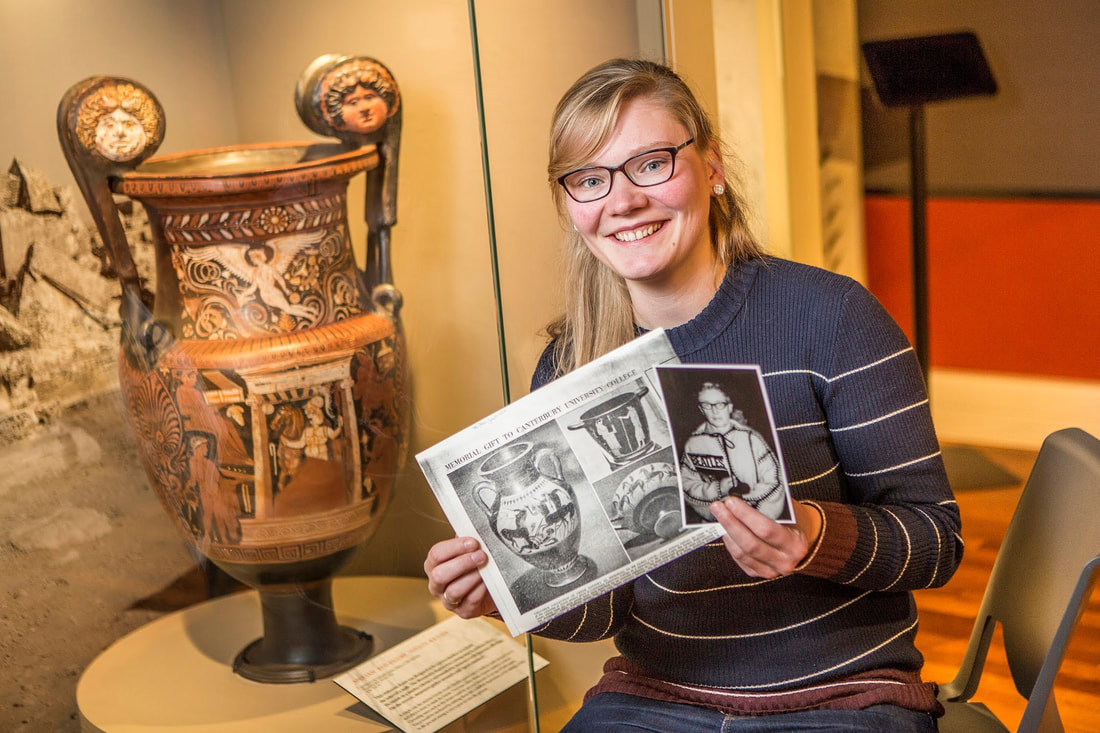
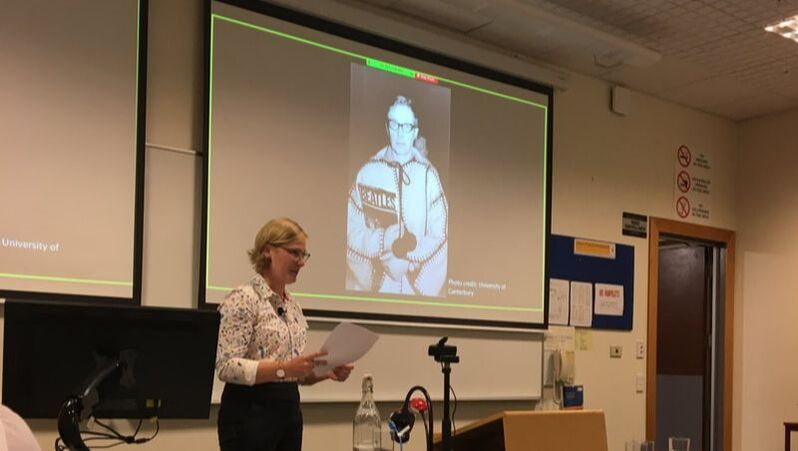
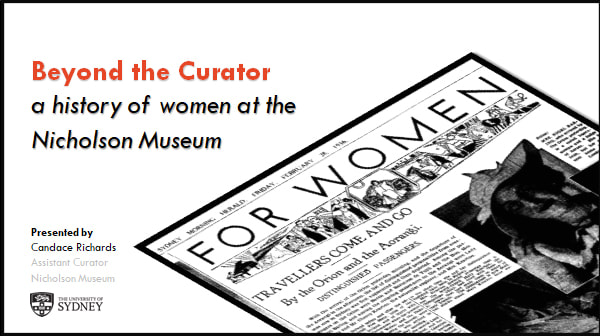
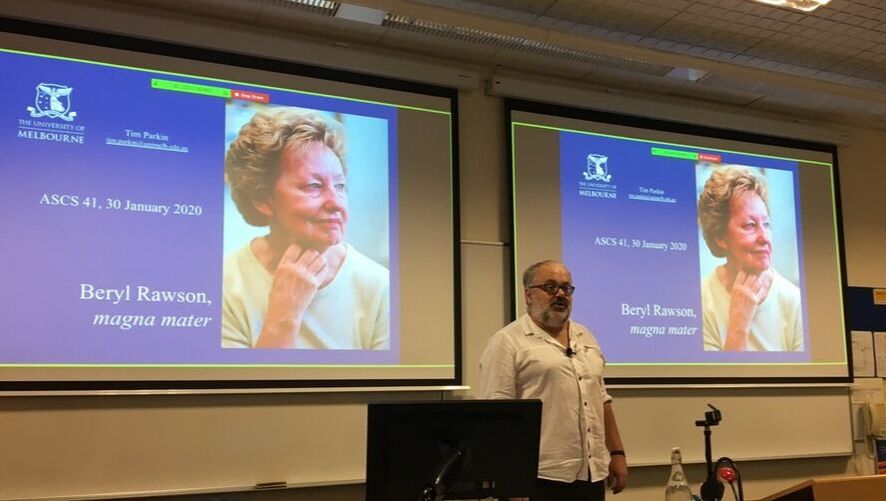
 RSS Feed
RSS Feed